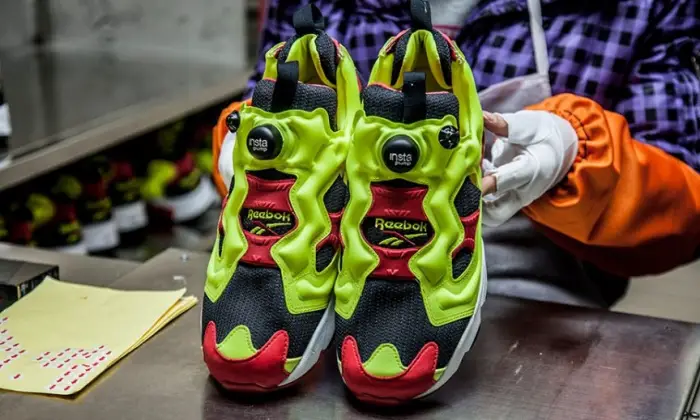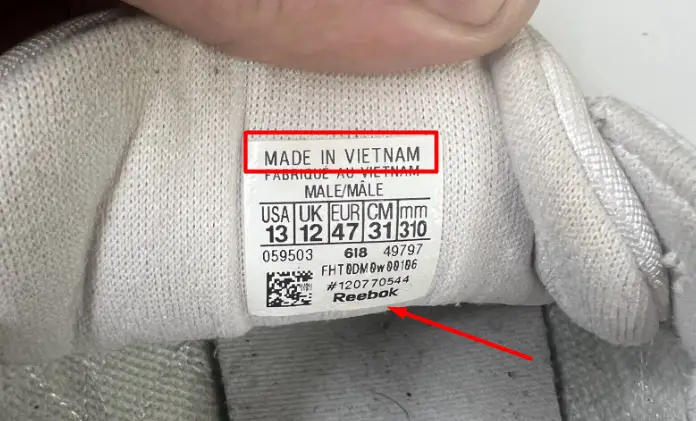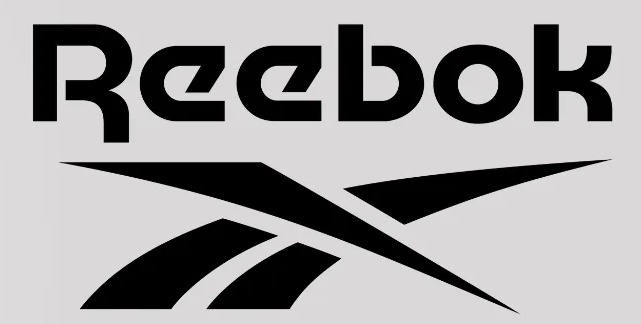Blog
Where Are Reebok Shoes Made?
The untouchable quality of Reebok shoes made it the top #1 sports brand in the 1980s and among the greatest footwear brands for all generations. Yet, where are Reebok shoes made?
Let’s investigate the long story of Reebok shoes to understand their origins and how they are made to serve the demanding sneakerheads worldwide.
Contents
Where Are Reebok Shoes Made?
Most Reebok shoes have been made in the United States from 2016 till now.
This sports giant also focuses its footwear production in two footwear powerhouses – Vietnam and China. These two Asian countries are also where Reebok outsourced many shoe components.
Before 2016, all of its shoes were manufactured in Asia. However, the first Reebok shoes were made in England.
According to some reports, Reebok shoes are also made in other countries like India, Indonesia, Pakistan, Cambodia, Sri Lanka, etc.
There are little to no details on the number of Reebok factories in each nation. Reebok also doesn’t reveal its footwear’s origin on its website. You can only check this information on your local retailers.
England
Reebok has made the most of its sneakers in Reebok’s facility in Bolton, England, since its first founding days in 1985.
The manufacturing of Reebok continued in England until 2009. At that time, Reebok and other sports and fashion brands shifted their operations to Asian countries to lower costs and maximize their profit margins.
United States
Reebok has chosen America as its global footwear production chain center from 2016 until now. After being acquired by Authentic Brands Group, Reebok brought its shoemaking to America.
There are 2 Reebok manufacturing facilities in America – one is the Liquid Factory in Wixom, Michigan (opened in 2016) and another in Rhode Island.
While these factories account for most technical components of the shoes, they still outsourced some shoe parts to Asian countries.
The Liquid Factory was named after “liquid” – an exclusive type of plastic made by Reebok and BASF – a famous German chemist firm. This plastic was used in the shoe’s outsole for a perfect fit using the 3D drawing technique.
There are two main differences between 3D printing and 3D drawing.
- First, 3D drawing is built with rubber and liquid plastics with higher flexibility, shock absorption, and durability.
- Second, 3D drawing results in sneakers with competitive prices than traditional molded ones.
The first “liquid” Reeboks were at a hefty price of $180 and gradually lower for the following versions. Beyond being an innovation, 3D drawing is also a key to boosting Reebok’s brand awareness and sales volume in its home country.
American-made Reebok shoes are mainly hiking boots, work boots, and some athletic and fashionable shoes.
Check more: Where Are Jordan Shoes Made?
China

From 2005 to 2022, most Reebok shoes and shoe components were assembled in China.
Pou Chen Corp (BaoCheng Group) is among the manufacturing partners of Reebok in China. This corporation is also the partner of other sports giants like Nike, Adidas, and Clarks.
Pou Chen has factories in Huangjiang Town Dongguan City, Gaobu Town Dongguan City, Jida Industrial District Zhuhai City, and Sanxiang Zhongshan City.
In The YueYuen Factory I (YueYuen Shoes Factory, Dongguan), approximately 3,000 to 4,000 workers produced Reebok shoes.
As the global manufacturing hub for sports giants, China has various advantages for affordable shoemaking, including low labor costs, a skillful workforce, and the high availability of raw materials.
However, since the COVID-19 pandemic, the US-China tariff war, and the rising labor cost in China, Reebok’s shoemaking has dramatically declined in China.
Reebok didn’t want to depend on manufacturing in only this Asian country.
In the past, China was criticized for its working conditions and low wages. However, Reebok declined this false statement.
This sports giant had strict ethical standards for its abroad supplies, well-complied with international labor laws and regulations.
Vietnam

Thanks to the steady growth of the textile and leather industries, Vietnam is the new destination for the shoemaking of Reebok post-COVID-19.
Nonetheless, this Southeast Asian country has mature infrastructure facilities for footwear production.
According to a report by Natixis SA, Vietnam ranked number one in the top emerging Asian economies. The wages and material costs in Vietnam are cheaper than in China.
Other Countries
Besides England, America, China, and Vietnam, Reebok also outsourced its shoes globally to other countries like India, Indonesia, Pakistan, Cambodia, Sri Lanka, etc.
However, there is little available information on shoe factories in these countries.
Read more: What Does SP Mean In Shoes?
Who Owns Reebok Footwear Now?
Authentic Brands Group LLC (ABG) is the official owner of the Reebok sports brand.
In March 2022, ABG successfully acquired Reebok from the German sportswear firm – Adidas Group for $2,46 billion. This was the largest acquisition of ABS since its founding year of 2010.
Before the ownership of ABG, Reebok was under the management of Adidas Group (2005 – 2022). Adidas added Reebok as one of its subsidiaries in 2005 for $3.8 billion.
After the acquisition, ABG will launch the Reebok Design Group (RDB) in cooperation with SPARC Group – a well-known fashion design producer.
RDB accounts for producing athletic shoes like the Floatride and the Nano.
More About Reebok Shoes
Reebok (Reebok International Limited) is an American sports brand and Authentic Brands Group (ABG) subsidiary.
This firm was started in Great Britain in 1958. At that time, Reebok was under the same parent company as J.W. Foster and Sons, an American sporting goods firm founded in 1895 in Lancashire.

This firm is now headquartered in Seaport District, Boston, Massachusetts.
Reebok became the most well-known athletics brand in the middle of the 1980s, before Nike.
Reebok provides various fashion and athletic shoes for all sports, mainly walking and running.
According to a report in 2022, 35% of customers in U.S. sports and outdoor shops chose Reebok as their favorite brand.
Beyond being a footwear manufacturer, Reebok has also raised brand awareness via social activities. It had countless sponsorships for sports clubs and events in Asia, Europe, Russia, North/South America, and Oceania.
The Reebok Foundation of this firm also ran the “Build Our Kids’ Success” (BOKS) program to promote physical education in US school kids.
How Reebok Shoes Are Made?
Every Reebok shoe is made with craftsmanship, using the latest innovations, with the customer’s comfort in mind.
Made With Exclusive Innovations
Reebok shoes, especially athletic ones, are equipped with exclusive innovations from the brand. Some of them are:
- Floatride Energy Foam
The TPU foam in the heel adds torsional and lateral support and propulsion for your forefoot. This technology is found in the Nano series.
- FlexWeave
This unique process has appeared on the Nano 7 training shoes. It provides a lightweight, breathable knit upper while maintaining the durability and strength needed for hardcore training sessions.
- 3D drawing
The historical 3D drawing of Reebook footwear is the future of 3D printing. It allows the brand to design outsoles with extreme responsiveness, perfect fit, and an affordable price. This process was in the Liquid Factory in America.
Maintain Sustainability
While staying innovative, Reebok always maintains sustainability. It gradually switched from animal products (leather) and non-recycled materials to more sustainable materials.
Apart from ready-made biomaterials, it will also invent new sustainable materials shortly.
According to the World Economic Forum, Reebok planned to invent 100% bio-based footwear products with USDA’s BioPreferred. Cotton and Corn is the first plant-based sneaker line made from corn and corn.
Final Words
Reebok shoes are manufactured globally, from England to Asian countries (China, Vietnam, and more), and even in the United States with a “made in the USA” collection.
Although this brand doesn’t reveal its shoe origin on its website, you can check this information by visiting the nearest retailer or the Customer Support team.

